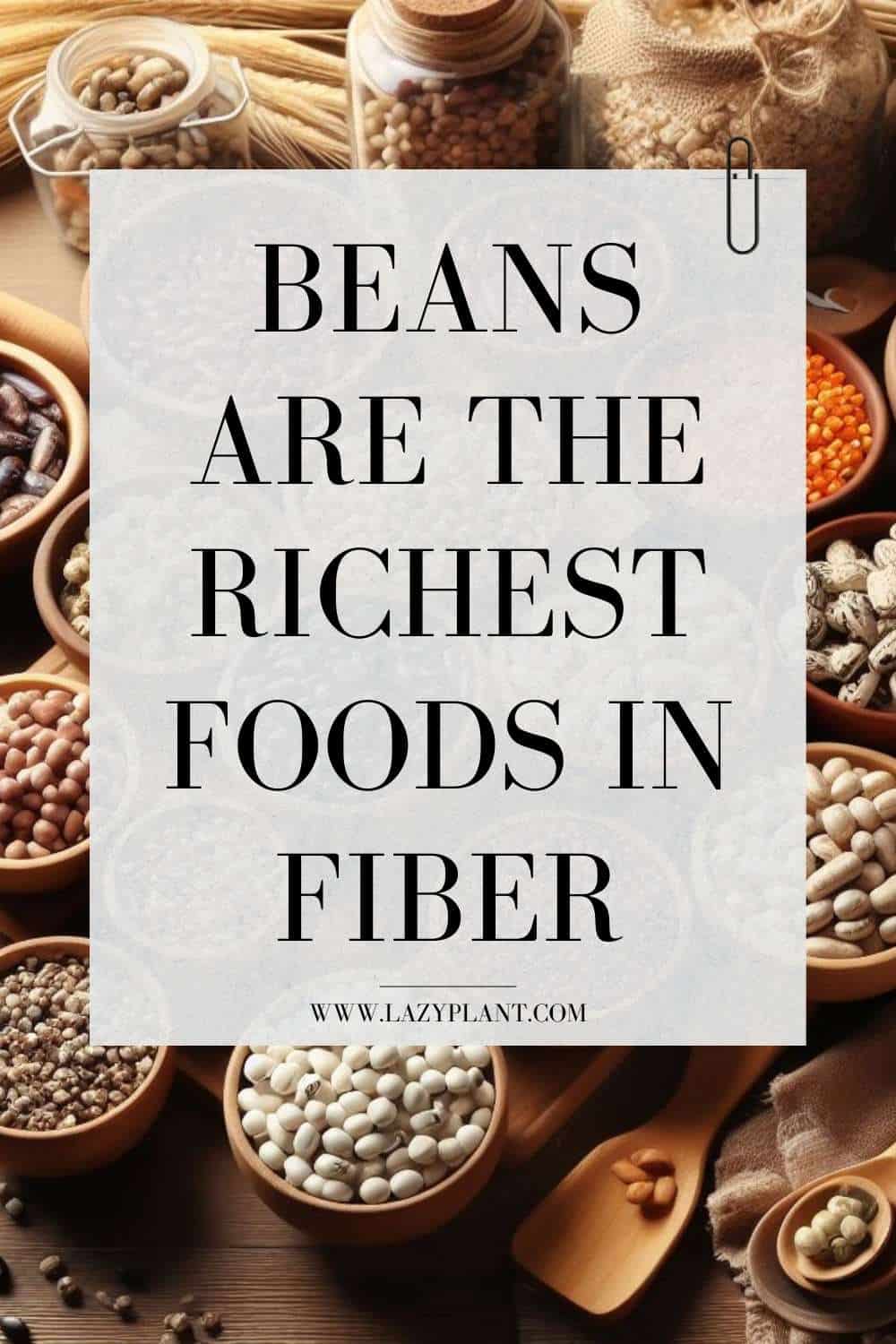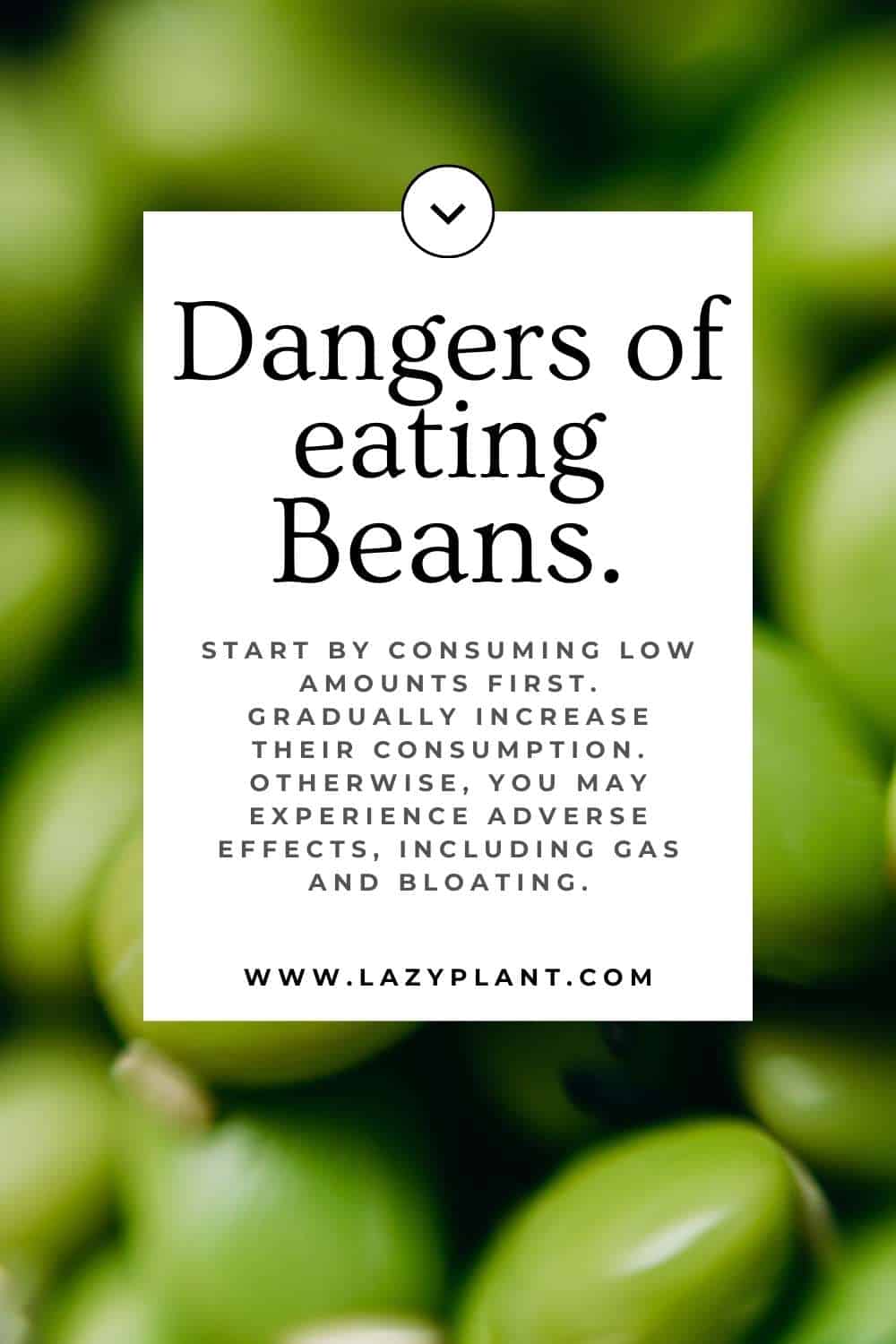Beans are the best sources of fiber. They can help us meet our daily needs. Just a serving of certain beans can provide more than 50% of the recommended daily intake!
How much fiber in beans?
Beans are the richest foods in fiber. They have 3.2-10.5 grams of fiber per 100g. A serving of beans provides 20-65% of the Daily Value (DV).
The richest common beans in fiber are navy beans. They contain 10.5 grams of fiber per 100g. A serving of navy beans provides 65% of the DV.
Pinto, black, garbanzo, adzuki, lima, and red kidney beans, as well as lentils, are also particularly rich in fiber. They provide more fiber than 40% of the required daily intake per serving!
| fiber (g) per 100g | fiber (g) per serving | % DV | |
| navy beans | 10.5 | 18.1 | 65% |
| pinto beans | 9 | 15.5 | 55% |
| black beans | 8.7 | 15 | 53% |
| lentils | 7.9 | 13.6 | 49% |
| chickpeas or garbanzo beans | 7.6 | 13.1 | 47% |
| red kidney beans | 7.4 | 12.7 | 45% |
| adzuki beans | 7.3 | 12.6 | 45% |
| lima beans | 7 | 12 | 43% |
| white beans | 6.3 | 10.8 | 39% |
| soybeans | 6 | 10.3 | 37% |
| fava beans | 5.4 | 9.3 | 33% |
| pink beans | 5.3 | 9.1 | 33% |
| green beans | 3.2 | 5.5 | 20% |
The high fiber concentrations make beans an excellent food choice for weight loss and good health.
Can beans help us meet our daily fiber needs?
We should consume at least 28 grams of fiber per 2,000 calories. However, most people who follow the standard American diet don’t consume enough fiber. It’s estimated that about 90% of Americans consume less fiber than the recommended daily intake.
Certainly, the regular consumption of beans can help our daily needs of fiber, as a serving provides 20-65% of the DV.
Can I get too much fiber from beans?
Actually, there hasn’t been established a maximum safe dose of fiber. But, people who don’t follow a plant-based diet may experience stomach discomfort when suddenly eating high amounts of beans.
Beans are important in supporting a healthy gut microbial population and diversity. But, in order to avoid bloating or gas, better to start consuming low amounts of beans or other fiber-rich foods. Increase your fiber intake gradually.[2]
What type of fiber is in beans?
Beans have both soluble and insoluble fiber. They’re much higher in insoluble fiber, though. For instance, lentils and lima beans are 90% insoluble, and only 10% soluble fiber. Kidney and white beans are 75% insoluble, and only 25% soluble fiber.[2]

Insoluble fiber doesn’t dissolve in the water. It absorbs water, making the stool softer. Insoluble fiber has a laxative effect. Moreover, insoluble fiber supports weight loss, as it induces satiety. On the other hand, soluble fiber dissolves in the water, turning into a gel. It’s also good for weight loss, as it slows down digestion.
How to minimize the adverse effects of high fiber intake?
Eating too much fiber from beans can cause gastrointestinal discomfort, such as bloating, constipation, and cramps
If you are experiencing adverse effects of high fiber intake from beans, you could reduce the serving size. Instead of eating fiber-rich foods in one meal, spread them out throughout the day. It’s best to get your fiber from a variety of foods, so don’t rely on any one food or source. Aim for a wide range of fruits, vegetables, whole grains, beans, and nuts.
Drinking plenty of water also helps. Water softens the fiber and eases digestion.
Engaging in light physical activities, like walking, could also help you digest beans.
Stop using any fiber supplements.
Do other foods have more fiber than beans?
Only plant-based foods are good dietary sources of fiber. Beans have the high fiber content. However, there are many other foods high in fiber:
- vegetables (e.g. eggplant, spinach, broccoli)
- raw fruits (e.g. avocado, raspberries) and dried fruits (e.g. raisins, dates)
- whole grains and pseudocereals (e.g. quinoa)
- mushrooms
- seeds, and nuts (e.g. walnuts, almonds)
On the contrary, animal-derived foods, such as dairy, eggs, and meat, contain no fiber. Refined foods are also poor dietary sources of fiber.

Health benefits of eating fiber-rich foods
Actually, a fiber-rich diet has been associated with a lower risk of developing heart disease, stroke, hypertension, diabetes, obesity, and certain gastrointestinal diseases. In addition, it may reduce high blood pressure and cholesterol, enhance immune functions, and improve insulin sensitivity.[3]